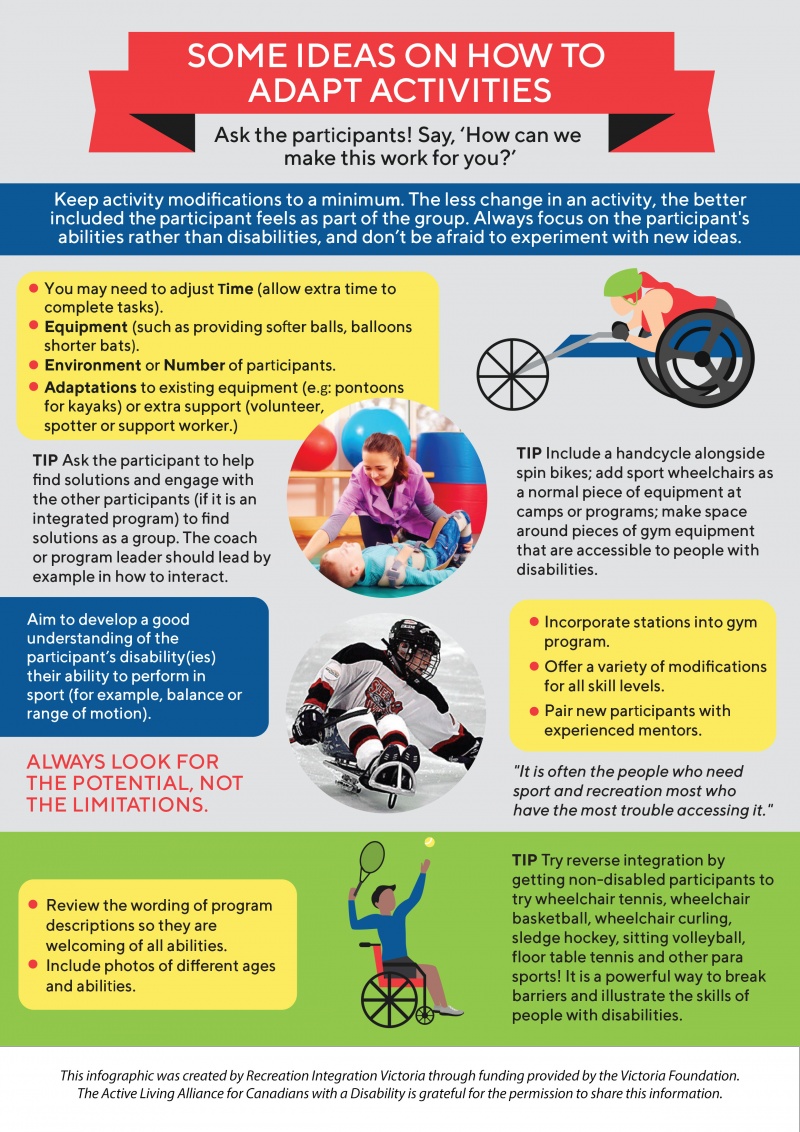SOME IDEAS ON HOW TO ADAPT ACTIVITIES
Text version
Ask the participants! Say, ‘How can we make this work for you?’
Keep activity modifications to a minimum. The less change in an activity, the better included the participant feels as part of the group. Always focus on the participant's abilities rather than disabilities, and don’t be afraid to experiment with new ideas.
You may need to adjust Time (allow extra time to complete tasks).
Equipment (such as providing softer balls, balloons shorter bats).
Environment or Number of participants.
Adaptations to existing equipment (e.g: pontoons for kayaks) or extra support (volunteer, spotter or support worker.)
TIP Ask the participant to help find solutions and engage with the other participants (if it is an integrated program) to find solutions as a group. The coach or program leader should lead by example in how to interact.
TIP Include a handcycle alongside spin bikes; add sport wheelchairs as a normal piece of equipment at camps or programs; make space around pieces of gym equipment that are accessible to people with disabilities.
TIP Try reverse integration by getting non-disabled participants to try wheelchair tennis, wheelchair basketball, wheelchair curling, sledge hockey, sitting volleyball, floor table tennis and other para sports! It is a powerful way to break barriers and illustrate the skills of people with disabilities.
ALWAYS LOOK FOR THE POTENTIAL, NOT THE LIMITATIONS.
Aim to develop a good understanding of the participant’s disability(ies) and their ability to perform in sport (for example, balance or range of motion).
Incorporate stations into gym program.
Offer a variety of modifications for all skill levels.
Pair new participants with experienced mentors.
Review the wording of program descriptions so they are welcoming of all abilities.
Include photos of different ages and abilities.
"It is often the people who need sport and recreation most who have the most trouble accessing it."
This infographic was created by Recreation Integration Victoria through funding provided by the Victoria Foundation. The Active Living Alliance for Canadians with a Disability is grateful for the permission to share this information.





